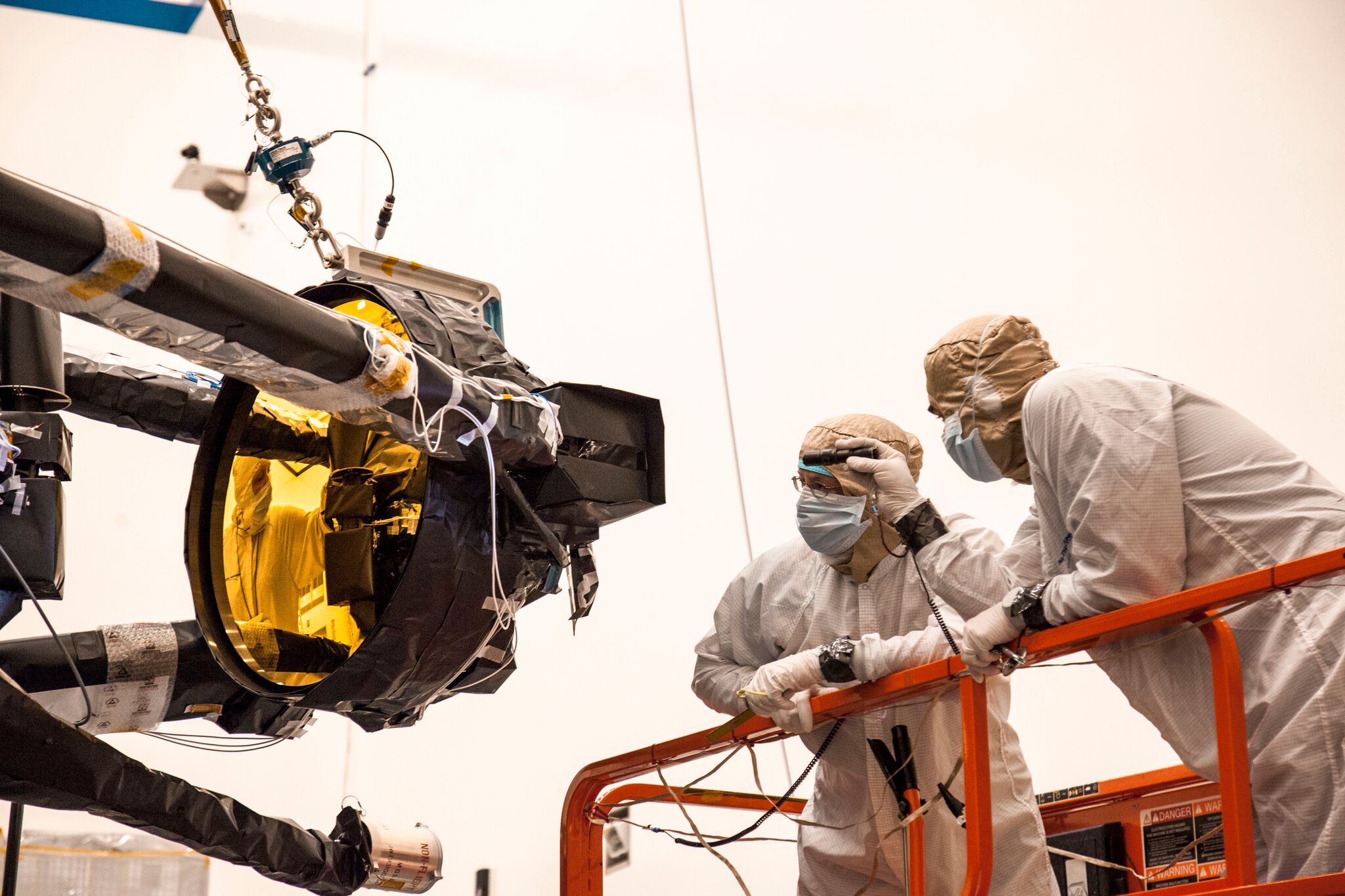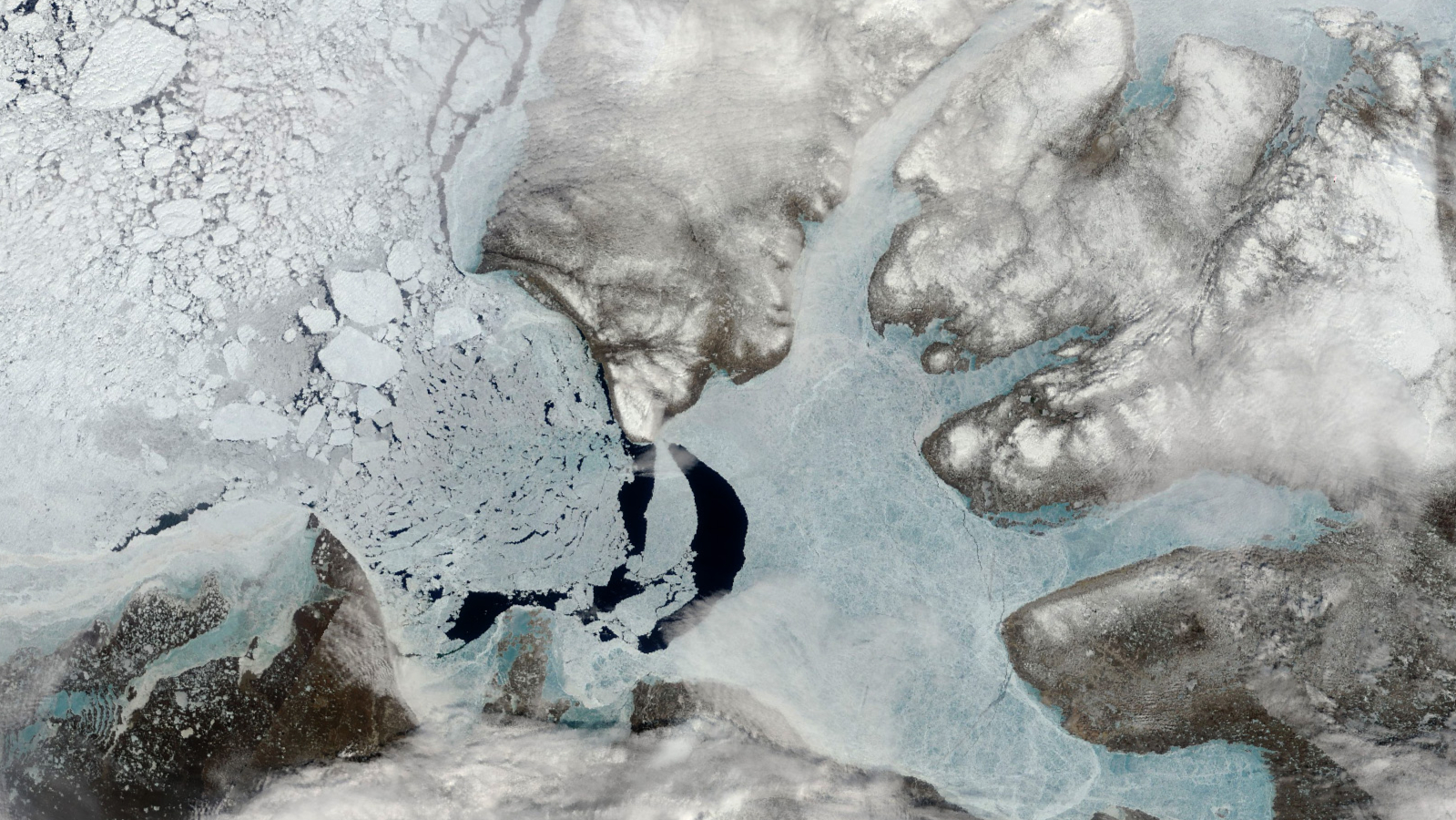NASA's Next Big Space Telescope Aces Key Mirror Test (Video)
The James Webb Space Telescope is scheduled to launch in 2021.
NASA's next big space telescope is getting its light-collecting gear ready to go. Technicians successfully tested deployment of the secondary mirror on the James Webb Space Telescope, which is expected to launch in 2021.
Despite its name, the secondary mirror has a huge role to play in the success of the Webb telescope's mission. And the technicians had just one chance to get the design right, as the telescope will orbit too far from Earth for astronauts to fix any mistakes.
When Webb is fully deployed, the secondary mirror will sit in front of 18 honeycomb-like primary mirrors. After these mirrors pick up light from a distant object, the secondary mirror will collect their individual signals. Then, the secondary mirror will funnel the combined light beam through tertiary and fine-steering mirrors, finally bringing the signal to the four instruments on Webb that will help scientists with their astronomical analysis.
Related: Building the James Webb Space Telescope (Gallery)

"The proper deployment and positioning of its secondary mirror is what makes this a telescope — without it, Webb would not be able to perform the revolutionary science we expect it to achieve. This successful deployment test is another significant step towards completing the final observatory," Lee Feinberg, optical telescope element manager for Webb at NASA's Goddard Space Flight Center in Maryland, said in a statement Tuesday (Aug. 6)
The work on the secondary mirror also represents a key milestone in Webb's construction, as this test was the last major step before putting the telescope together as a complete observatory, NASA officials said. This test also showed that the electronic connections in the telescope are working, including delivering commands between components.

Webb is expected to launch on an Ariane 5 rocket from French Guiana in March 2021. In the following month, the instrument will travel 1 million miles (1.6 million kilometers) to its observing location: the Earth-sun Lagrange point 2, a gravitationally stable point in space. This spot has been used for past space missions, including Europe's Herschel Space Observatory and Planck telescope.
Breaking space news, the latest updates on rocket launches, skywatching events and more!
The Webb telescope is billed as the successor to NASA's venerable Hubble Space Telescope, whose numerous achievements over nearly 30 years include helping refine astronomers' calculations of the expansion rate of the universe. But this advanced technology comes at a cost. Webb's launch has been delayed by nearly seven years, while the observatory's cost estimate nearly doubled, from an initial estimate of $5 billion in 2009 to $9.7 billion as of June 2019.
- NASA's James Webb Space Telescope: Hubble's Cosmic Successor
- House Spending Bill Fires Warning Shot at James Webb Space Telescope
- NASA's James Webb Space Telescope Arrives in California for Final Assembly (Photos)
Follow Elizabeth Howell on Twitter @howellspace. Follow us on Twitter @Spacedotcom and on Facebook.
Join our Space Forums to keep talking space on the latest missions, night sky and more! And if you have a news tip, correction or comment, let us know at: community@space.com.

Elizabeth Howell (she/her), Ph.D., was a staff writer in the spaceflight channel between 2022 and 2024 specializing in Canadian space news. She was contributing writer for Space.com for 10 years from 2012 to 2024. Elizabeth's reporting includes multiple exclusives with the White House, leading world coverage about a lost-and-found space tomato on the International Space Station, witnessing five human spaceflight launches on two continents, flying parabolic, working inside a spacesuit, and participating in a simulated Mars mission. Her latest book, "Why Am I Taller?" (ECW Press, 2022) is co-written with astronaut Dave Williams.
